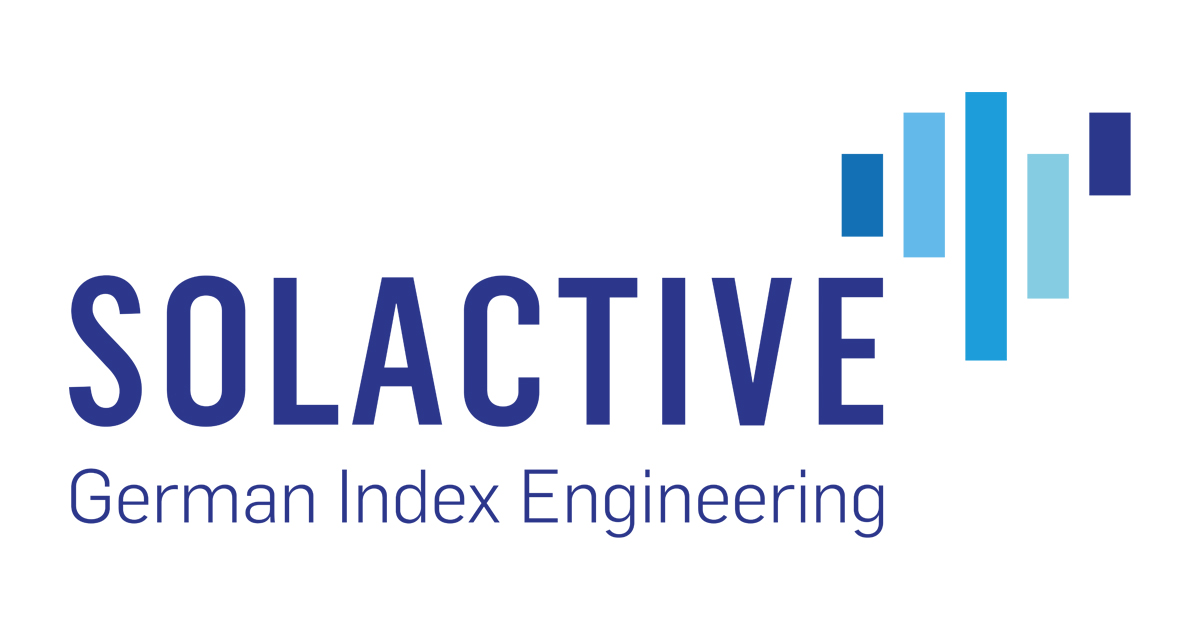A growing concern between investors and index providers is the weighting methodology for bond indices. Most bond indices follow a market cap weighting approach which means the weighting of the bond depends on the bond’s price and the amount outstanding, according to German index provider Solactive.
One criticism of market-weighted indices is price rallies on bond prices that can lead to overweighting of the bonds. Additionally, the more debt an issuer has outstanding, the greater the weighting and the larger the credit risk exposure due to an increased chance of default. So is there a more efficient weighting method for bond indices to reduce risk or increase value?
Solactive has launched a white paper named It’s The Economy, Stupid which compares the performance of a market cap weighted index with a GDP weighted index.
The index manipulated is the Solactive Broad Global Developed Government Bond index, a local currency government bond index. The benchmark includes investment grade rated issuers as well as sub-investment grade issuers. Only two issuers are rated below investment grade (Greece and Cyprus).
The market cap weighted index is tilted towards the largest issuers such as the US, Japan and France. One surprise is the significantly large weighting from Italy, which is greater than that of Germany and the UK.
For the GDP weighted index, the weight of the bond within each country is determined by the market cap of the instruments.
Similar to the market cap weighted index, the US maintains a dominant weighting in the GDP index with 37% and 38%, respectively. Japan remains second to the US but with a reduced weighting of 14% down from 20%. Other notable changed include Italy (-2%), Canada (+3%) and Germany (+2%).
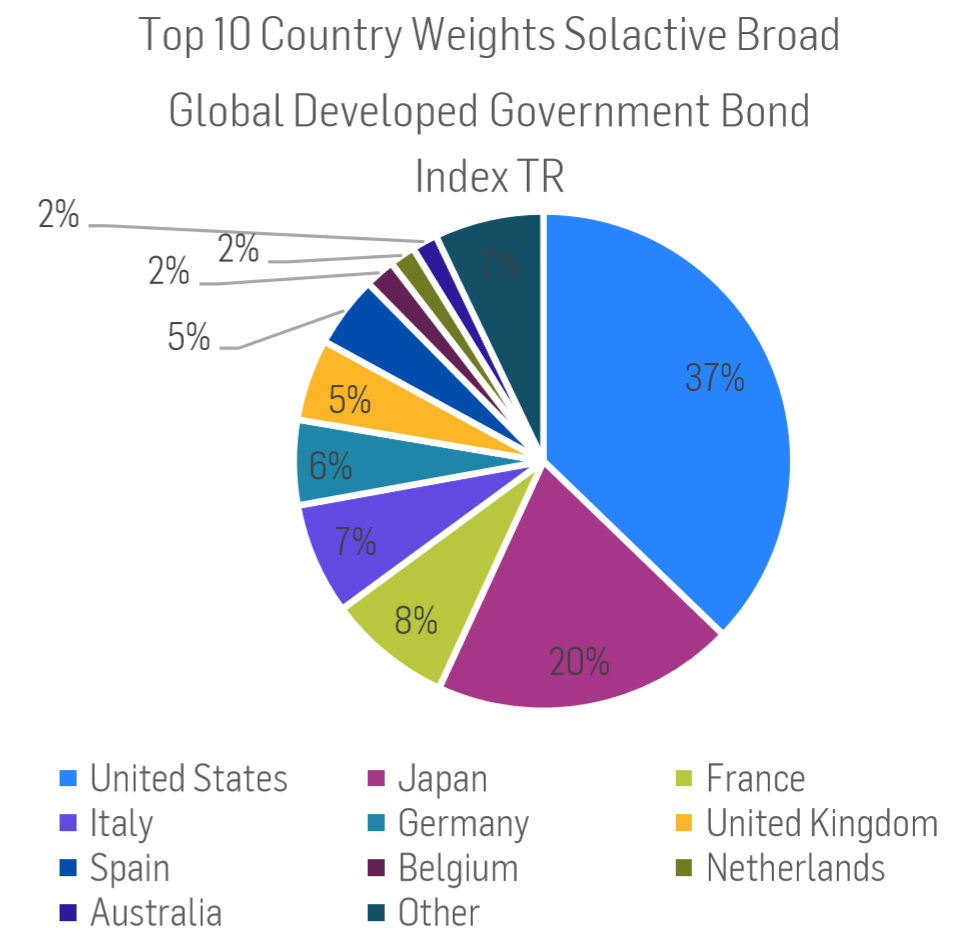
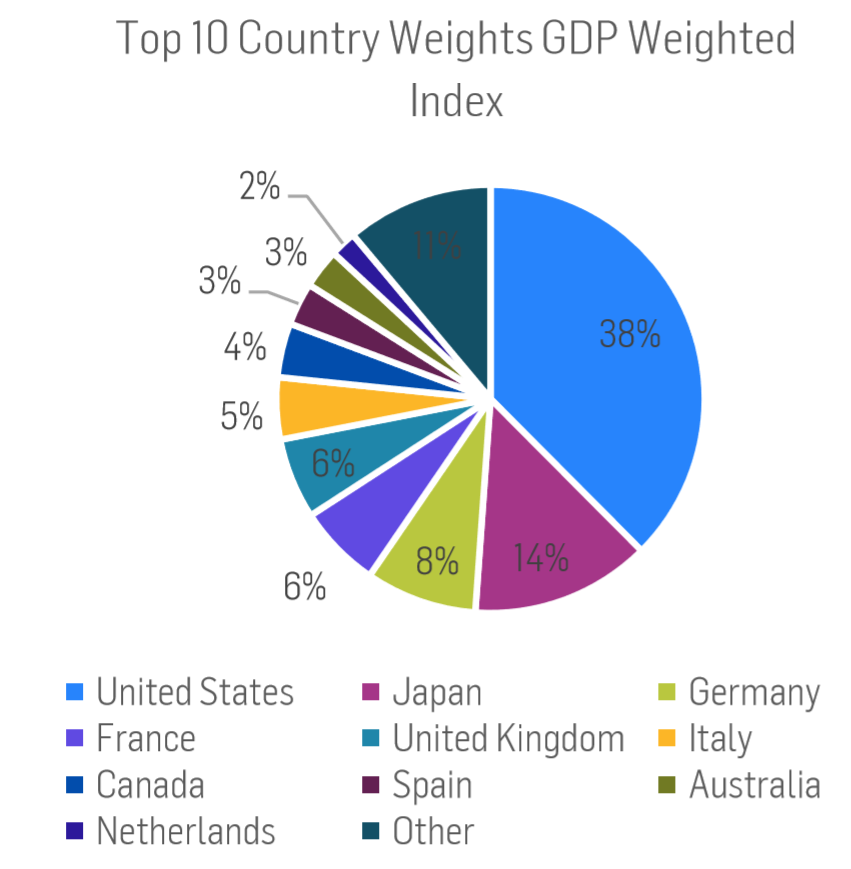
Top 10 Country Weights for market cap weighted index (left) and GDP weighted index (right) – Source: Solactive
The rating weights for the market cap weighted index are majority AA-rated bonds with 54.6%. 12.1% are AAA-rated and 20.5% A-rated leaving 12.8% BBB grade or lower.
The weighting for the GDP weighted index nearly doubles AAA-rated bonds from 12.1% to 23%. AA-rated remains unchanged at 54% and A-rated fall slightly to 15%.
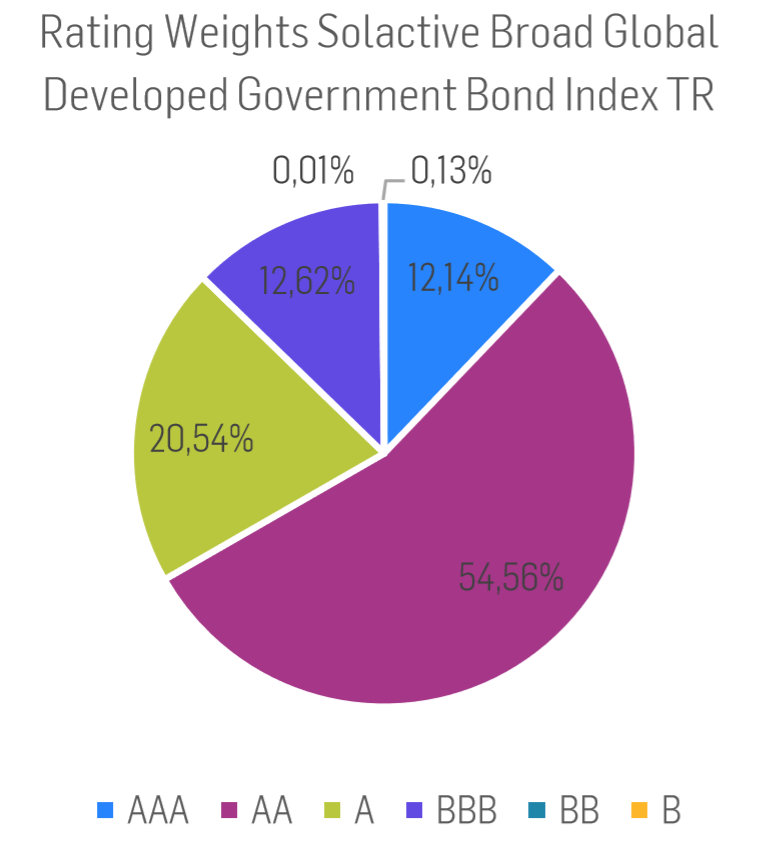
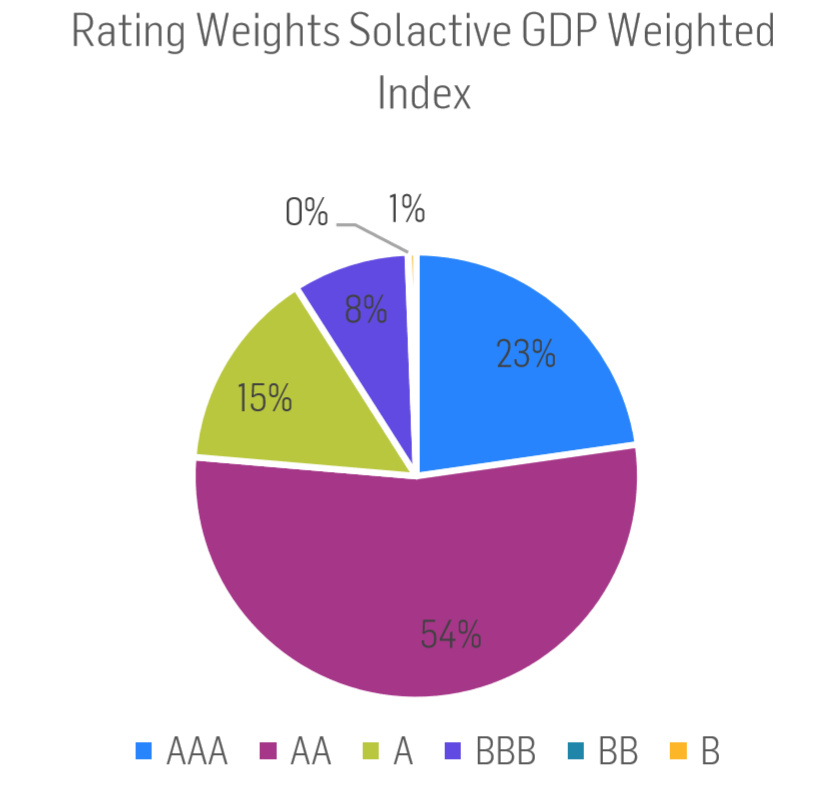
Rating weights for market cap weighted index (left) and GDP weighted (right) - Source: Solactive
For most investors, performance is all they care about. Between 2008 and 2019, the market cap weighted index produced a total return of 43% with an annualised return of 3.6%. These figures, while respectable, are overshadowed by the GDP weighted index which produced a total return of 52%, an annual return of 4.23%.
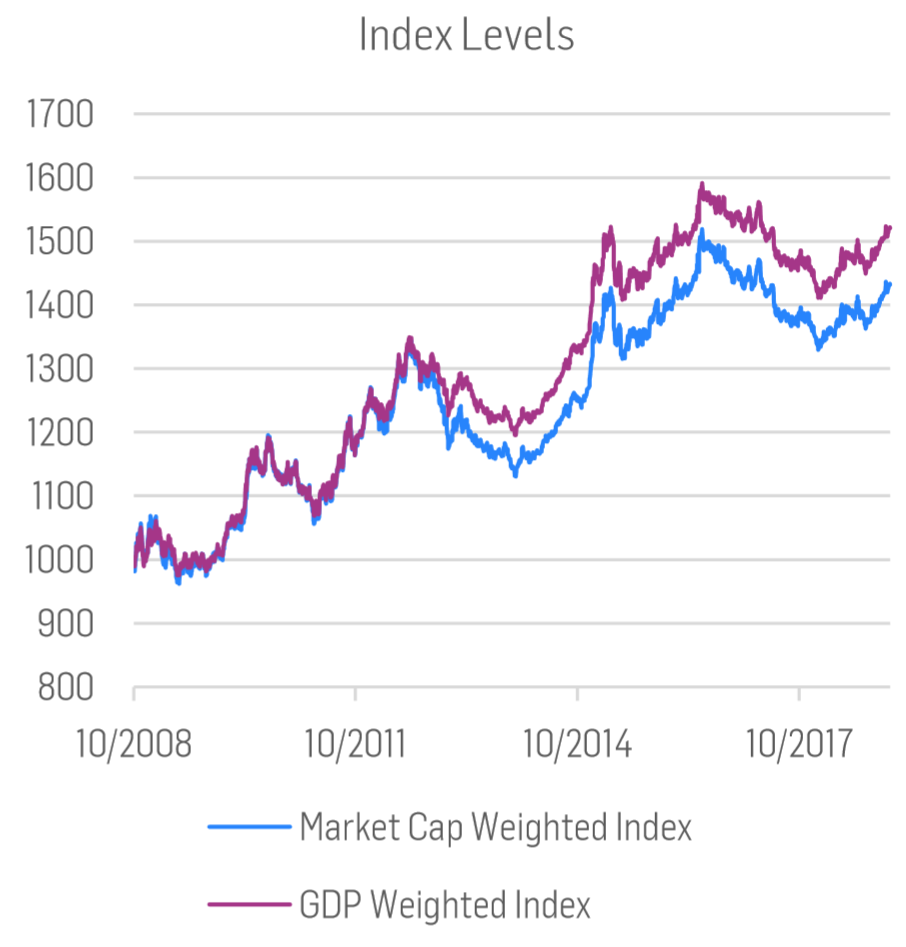
Solactive says GDP weighted index’s outperformance cannot be explained by exposure to credit risk but suspect the active weights within countries and currencies. The index provider created another index which eliminated the currency effects on the local GDP and compared the performances.
The comparison found the GDP weighted index outperformed the GDP weighted country-risk-only index suggesting bearing currency risk achieves higher returns.
Therefore, a simple GDP weighted strategy is able to outperform a standard market cap weighted index on both absolute and a risk-adjusted basis. A GDP weighted fixed income index would be beneficial during periods of stress and offers a higher degree of diversification to investors, the report concluded.

